Looking Glass demos Hololuminescent Display monitors — sizes range from 16 to 85 inches, starting at $1,500
These displays don't need eye tracking, special glasses, and are good for group viewing.
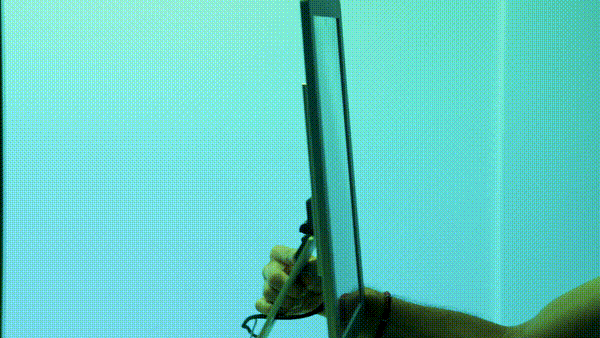
Looking Glass has taken the wraps off its new monitors with Hololuminescent Display (HLD) technology. The firm has been in the holographic displays market for a decade, but it believes its new HLD monitors, which are just 1-inch thick and deliver up to a 4K resolution, can deliver “magical holograms that can be deployed anywhere.” HLD will allow the firm’s immersive light field to be rolled out anywhere standard video screens are used today.
According to Looking Glass, HLDs “create an immersive three-dimensional stage for all types of content -— without the complexity of traditional 3D pipelines.” They do not need eye tracking technology or special viewing lenses, so they are suitable for viewing by groups. This is a significant quality that could potentially help adoption in traditional digital signage devices.
For content creators, HLDs are said to work with standard 2D video workflows mixing real-world footage, animation, interactive applications, and AI generation. A demonstration workflow with a green screen, character, and Adobe Premiere Pro is outlined on the HLD How It Works page.
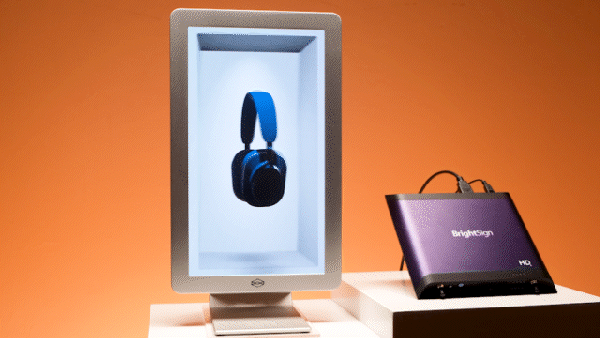
Here's how Looking Glass’ prior Light Field Displays (LFD) compare to these new HLD models.
Feature | Hololuminescent Displays (HLD) | Light Field Displays (LFD) |
|---|---|---|
Content Creation | Standard 2D content pipelines | Specialized 3D software |
Setup Complexity | Easy to intermediate, Plug and Play | Intermediate to advanced 3D software |
Ideal Content | People, products, characters | CAD, medical scans, terrain maps, data visualization |
3D Effect | Fixed holographic stage for holographic depth cues | Multi-view parallax |
Eye Tracking | None | None |
Best For | Digital signage, retail, experiential displays | R&D, medical, engineering, 3D art |
Sizes Available | 16”, 27”, 86” | 6”, 16”, 27” |
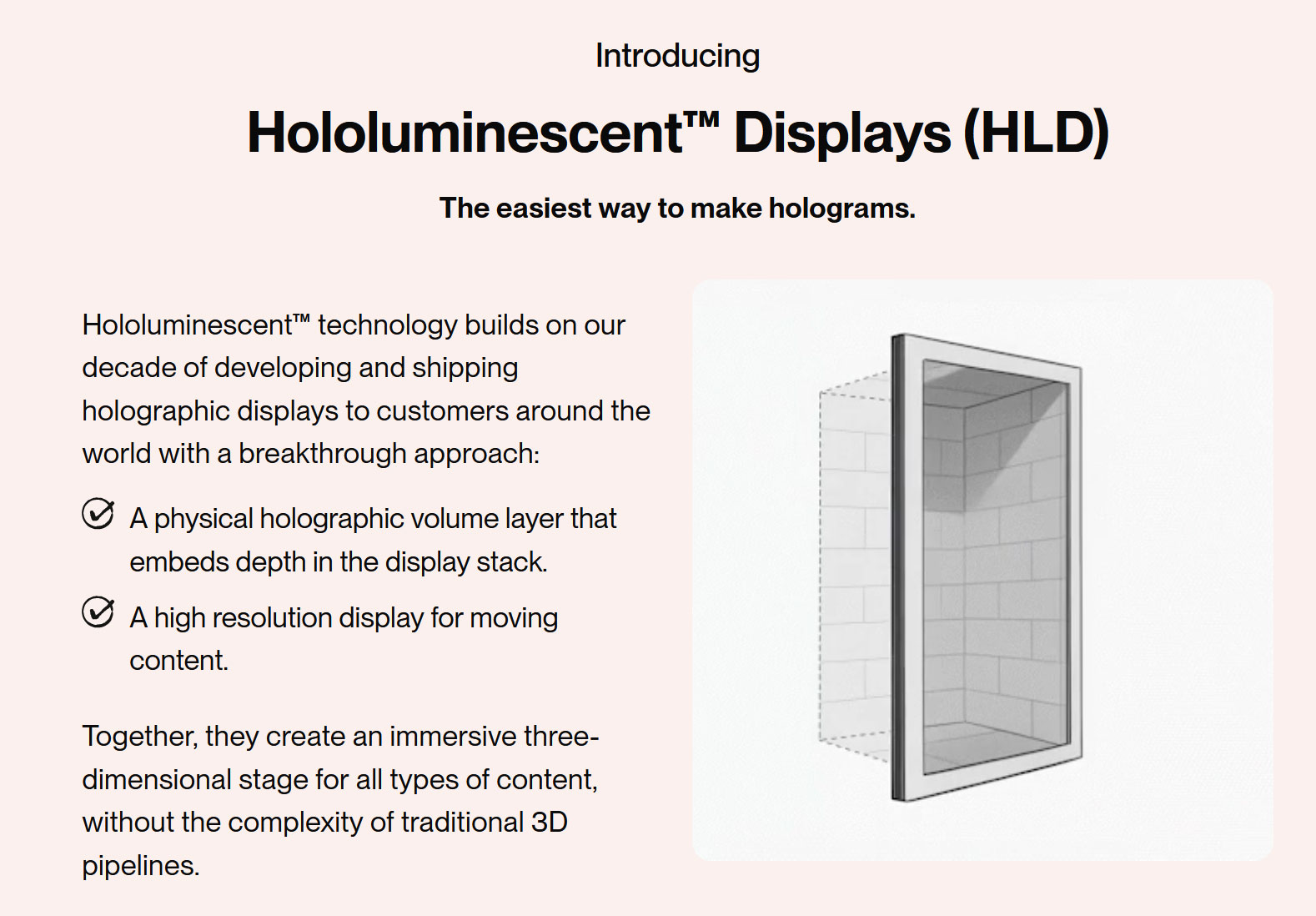
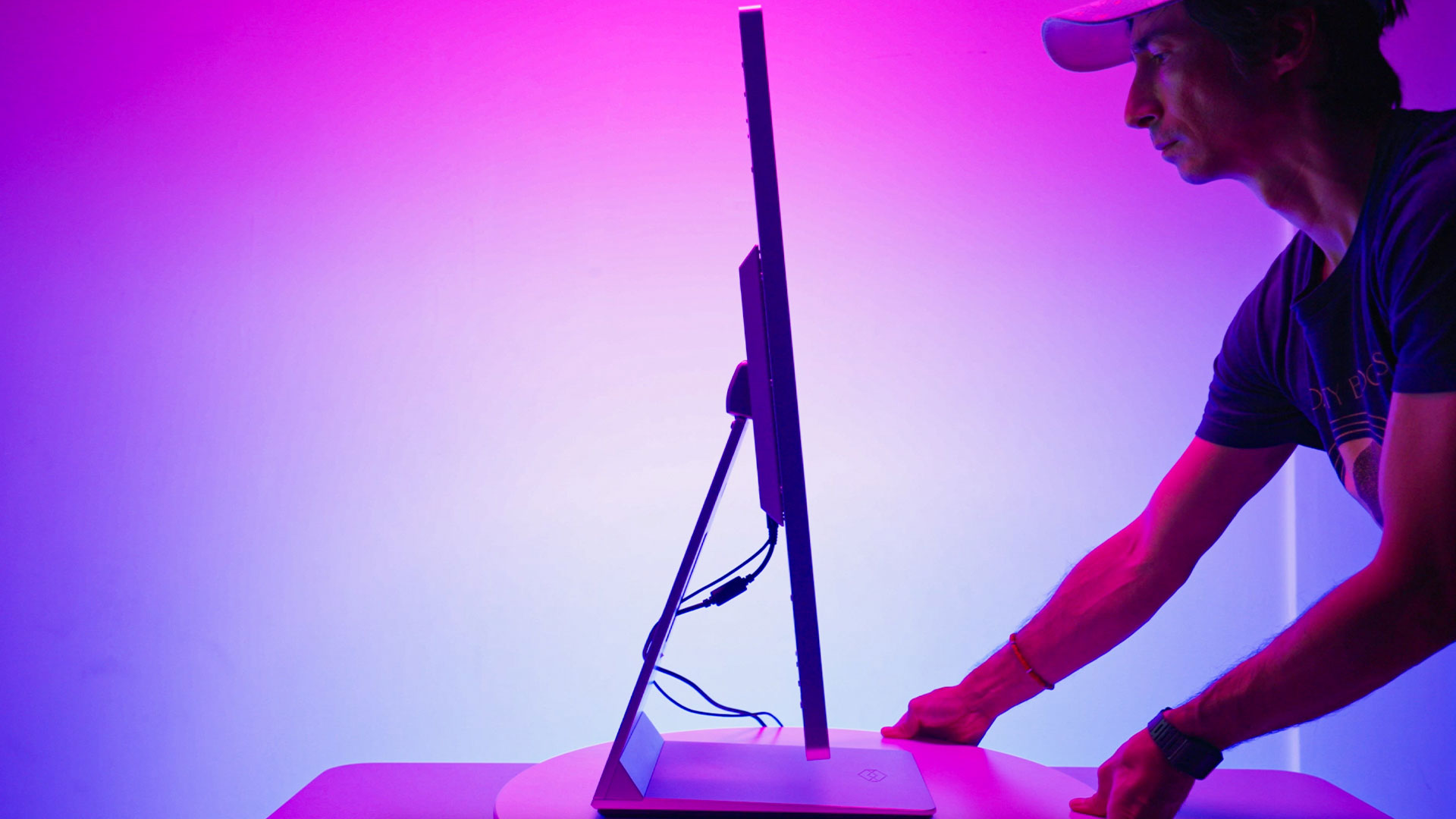
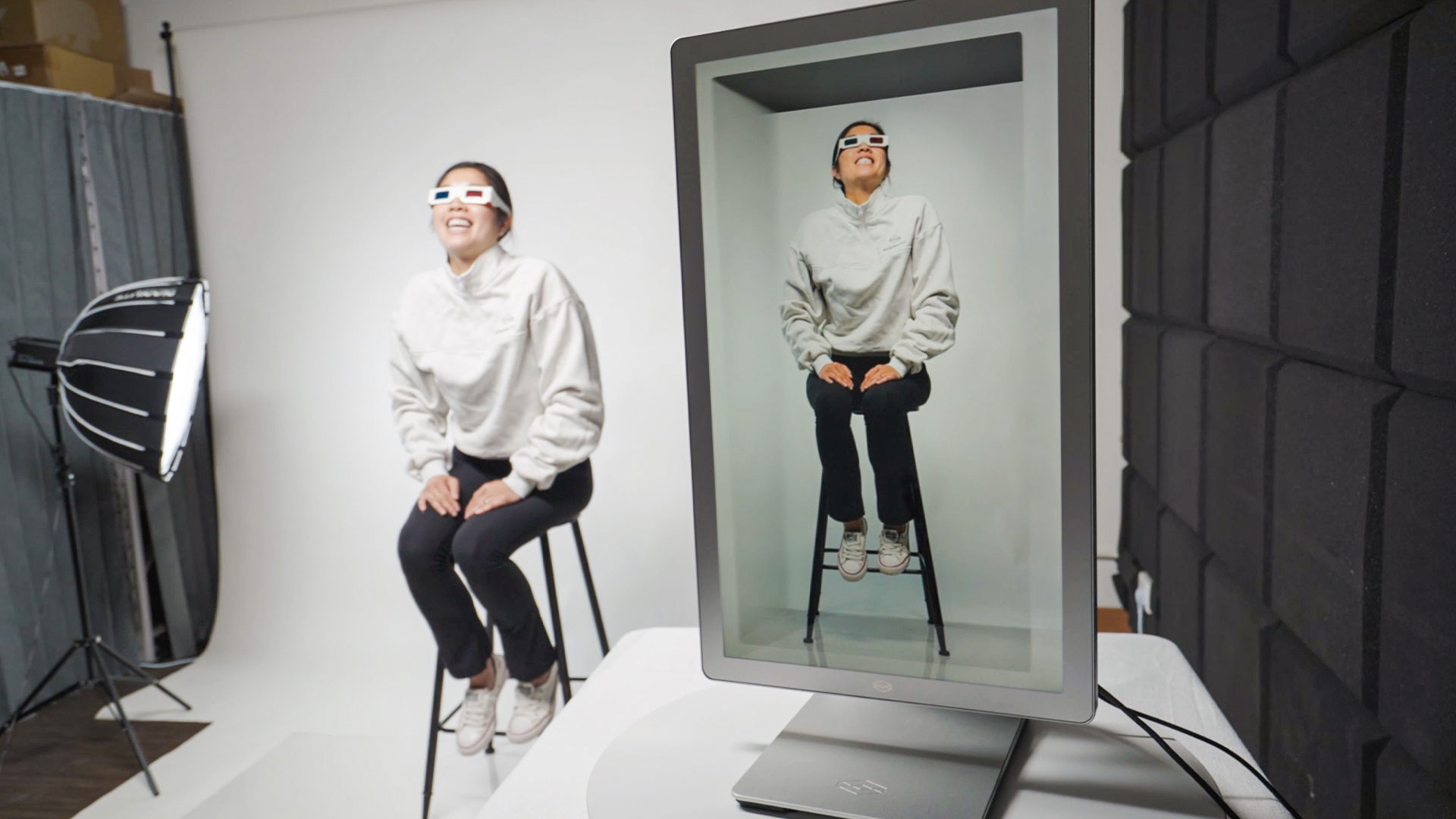
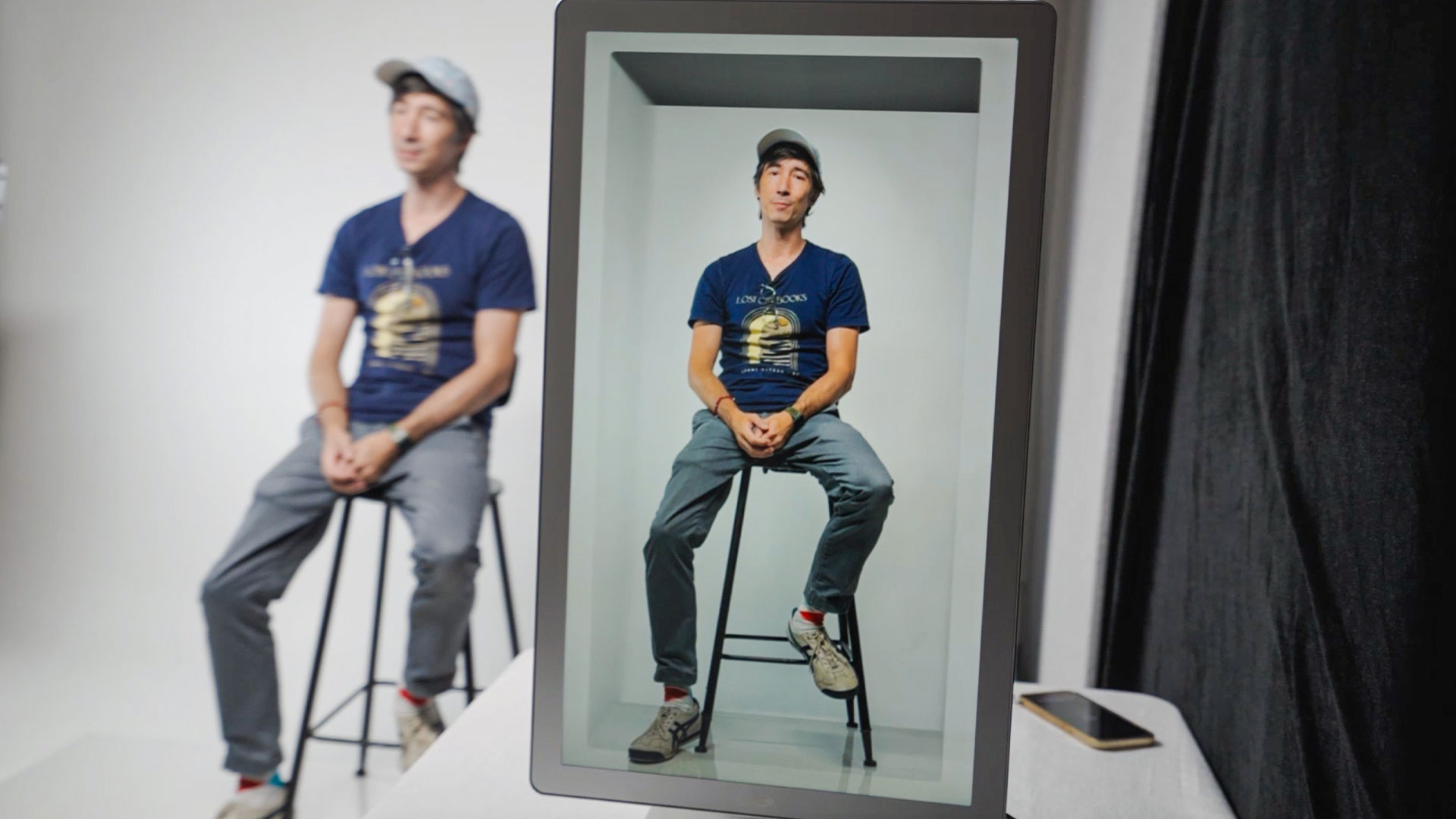
Looking Glass’s Hololuminescent Displays will be available in Q4, and will start at $1,500 for an FHD 16-inch display (pre-order offer). A 27-inch 4K HLD will ship in November and December of this year, and 86-inch 4K displays will roll out in February 2026, says the firm, but pricing is yet to be disclosed.
Looking Glass Light Field Displays, for advanced 3D visualization, interaction, and research, will continue to be offered to teams who work in 3D R&D and industrial visualization.
Follow Tom's Hardware on Google News, or add us as a preferred source, to get our up-to-date news, analysis, and reviews in your feeds. Make sure to click the Follow button!
Get Tom's Hardware's best news and in-depth reviews, straight to your inbox.

Mark Tyson is a news editor at Tom's Hardware. He enjoys covering the full breadth of PC tech; from business and semiconductor design to products approaching the edge of reason.
-
Jabberwocky79 Give me a 48", 4K, Mini-LED, glasses-less 3D monitor with 120hz refresh and can switch from a curved to flat panel. Is that too much to ask? Why has no one made this happen yet? :unsure:;)Reply -
usertests It's interesting. I would want to see it in person and it's not clear how useful it is.Reply
A lot of research has been done on turning 2d content, or video/images from multiple angles into 3d. If you have no content, transforming what's available might work. -
Stomx Why nobody offering just usual but more decent quality AR glasses ? Sony 4k microdisplays exist already. The 3D effect is there automatically if you want itReply -
Quartich Reply
As far as I can tell, it is 2 layers. A backlit LCD or similar display is where a 2d video is displayed (probably a video format that specifies transparency) and this is all in front of a very simple hologram box. The deep box makes the 2d video appear 3d, but the content in the center of the display is not true 3d. This "3d display" is more of an optical illusion, as the only real 3d part is the box. Cool effect though, but stick with normal 3d monitors if you want real 3d. This is more of a display/advertising product.Hooda Thunkett said:What technology are they using to make this work? -
edzieba There is no holography involved, and these are not light-field displays.Reply
These are autostereo displays, but very slightly tilted (so most of the displayed images are arranged side-to-side to account for head movement, but there are a handful up/down so the trick is not too obvious.
Their main improvement over other autostereo displays is the use of a custom subpixel filter that repeats at an angle rather than the usual vertical Bayer patter, so that colour artefacts are reduced for their tilted lens layout. -
Jabberwocky79 Reply
Yep, Nvidia had it figured out 15 years ago with reading the depth buffer on a driver level and separating the image into two, displayed simultaneously in stereo. Some of the best gaming I ever had was in true stereo 3D. Shame it never caught on... if the demand was there we would have reached mainstream glasses-less 3D by now.usertests said:It's interesting. I would want to see it in person and it's not clear how useful it is.
A lot of research has been done on turning 2d content, or video/images from multiple angles into 3d. If you have no content, transforming what's available might work. -
bit_user Reply
Are you referring to their displays, in general, or this specific model?edzieba said:There is no holography involved, and these are not light-field displays.
These are autostereo displays, but very slightly tilted (so most of the displayed images are arranged side-to-side to account for head movement, but there are a handful up/down so the trick is not too obvious.
Their main improvement over other autostereo displays is the use of a custom subpixel filter that repeats at an angle rather than the usual vertical Bayer patter, so that colour artefacts are reduced for their tilted lens layout.
I'm unclear about how this model differs from their prior displays, although it sure sounds like it does in some substantial ways. Do you have any insights into that? I was hoping you might! The info provided by the manufacturer is about as clear as mud, to me. -
bit_user Reply
Good AR is hard and takes a lot of compute. That makes it not cheap, as well. Apple is currently the state of the art, far ahead of anyone else, and yet their solution is so bulky and expensive that they've had to cut their sales forecasts way back from when it launched.Stomx said:Why nobody offering just usual but more decent quality AR glasses ? Sony 4k microdisplays exist already. The 3D effect is there automatically if you want it
